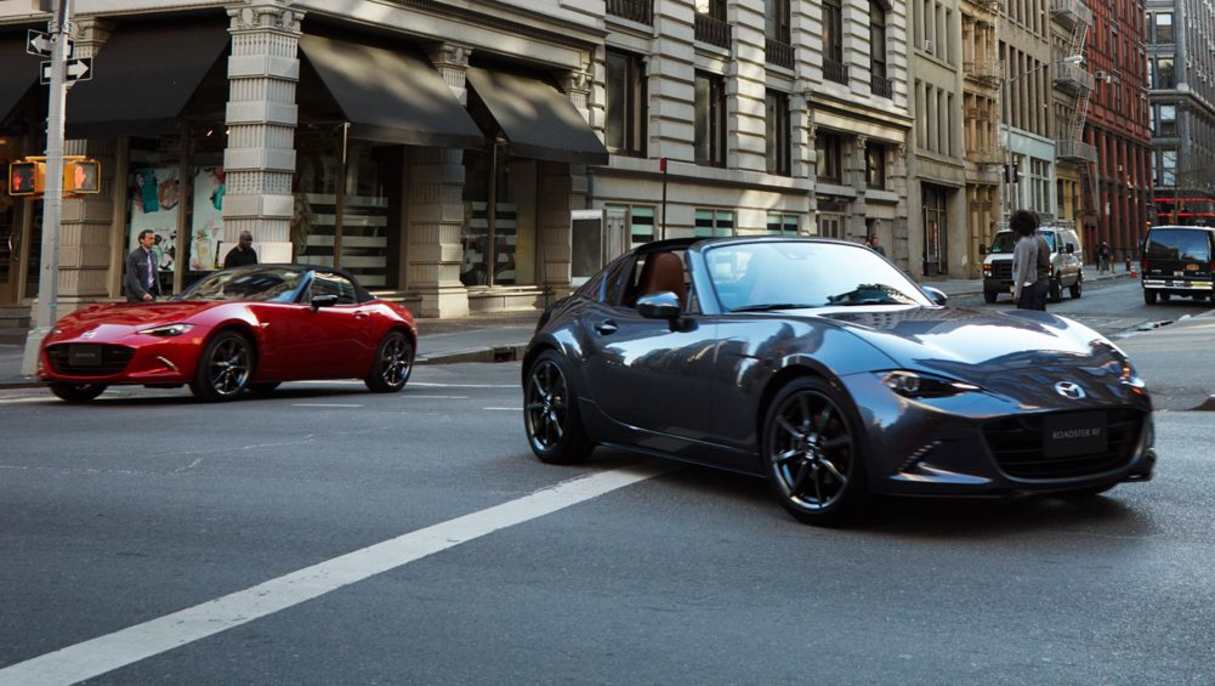In December, Mazda Australia announced that it was dropping the smaller of the two engine choices offered in the MX-5.
This is disheartening news to drivers who love the lightness and zingy purity of a small capacity but high-revving petrol engine in their open-top sports cars – and that’s something that the 1.5-litre four-cylinder unit in the ND series has long delivered in spades, dishing out 97kW of power at a heady 7000rpm and 152Nm of torque at 4500rpm.
But it’s hardly the end of the world for everybody else, since the remaining 2.0-litre engine is hardly a nail, providing usefully more punch (135kW at 7000rpm and 205Nm at 4000rpm) through to the rear wheels via a superbly immersive six-speed manual or alert automatic transmission (for an extra $2000).
This is how Mazda put it:
“With customer demand for the more powerful 2.0-litre Skyactiv-G powertrain surging since its October 2018 update, the 1.5-litre Roadster will be resigned. The 2018 upgrade gave the 2.0-litre the same free-revving and lively characteristics that enamoured drivers with the 1.5-litre.”
The pre-MY19 update’s 2.0-litre offered 118kW at 6000rpm and 200Nm at 4600rpm.
Now, that’s all fine and well, and to be fair, the $1600 surcharge that covers the cost of going to the bigger engine shouldn’t cause any financial hardships, especially given the extra torque and subsequent open-road performance flexibility that the 2.0-litre engine provides.
Base prices did start at $36,090 before on-road costs, but now jump from $37,690.
Furthermore, the MY22 changes do bring actual worthwhile safety improvements for owners and drivers, in the guise of standardised dlriver attention alert, lane departure warning, rear parking sensors, Smart City Brake Support-Rear (AEB for reversing), auto-dimming rear-view mirror and LED daytime running lights.

Even more interesting is a new technology Mazda dubs ‘Kinematic Posture Control technology, that applies some slight braking to the inner rear wheel when cornering hard to reduce roll and pull the car down to stabilise its posture, as the press release puts it. The upshot should equal smoother and more linear cornering at higher speeds.
Throw in fresh trim and new colour options, and this should all seem like progress for the world’s only affordable two-seater rear-drive roadster.
However, the dropping of the 1.5-litre engine is an erosion of what the MX-5 has stood for since the NA original’s March 1989 unveiling, since the larger engine adds extra mass – upwards of about 20kg, by our calculations using Mazda’s website data – 1033kg versus 1058kg, give or take a few kilos for the latter’s extra equipment.
.jpg)
When the ND was launched in Australia in August, 2015, program manager, Nobuhiro Yamamoto – a 40-year company veteran at the time who had worked on all previous MX-5 iterations – emphasised how the newcomer was a return to NA values, and this informed every decision made.
“My hobby is MX-5,” he said at the time. “Innovate in order to preserve – a return to the aspirations of the original MX-5… this became the motto of the ND’s development and helped us overcome challenges.”
The car has since evolved, but in 2015 the earliest Australian-delivery ND was some 91kg lighter than its NC equivalent due to being appreciably smaller (though 10mm wider, surprisingly), with the 1.5-litre roadster tipping the scales at 1009kg. The 1989 version weighed just 940kg. Mazda obsessed over shaving kilos, employing lighter steels and aluminium, resulting in a 20kg lighter body that was also stiffer and stronger. Every bit helped.
Mazda has banged on about its gram-by-gram strategy for almost 20 years, and the current MX-5 1.5-litre is one of the company’s crowning achievements, winning awards and holding its own against far-more expensive alternatives like the BMW Z4, Porsche 718 Boxster and (now discontinued) SLK/SLC convertibles.
.jpg)
Keep in mind, too, that the ND launched at an astounding $31,990 before on-road costs, adding to its incredible value for money, meaning the MY22 version costs nearly $6000 more. In the intervening years, Mazda has improved the MX-5, added more equipment to the base car (including extra driver-assist safety and a reverse camera) as well as making it quieter. All these and more upped the weight by about 25kg.
The 2.0-litre engine and further specification uplift means the new base grade probably exceeds 1060kg now.
Ultimately, roadster fans and sports car purists don’t want unnecessary add-ons, and we lament the fact that a car that shone so brightly as a result is no longer available in Australia.
Mazda, we will always be glad and grateful for the MX-5, especially when nobody else offers anything remotely similar for the money, and we’re pretty sure the MY22 improvements make it an even better ownership and driving proposition for most people.
But why did you have to go and kill the 1.5?





.jpg)
.jpg)

.jpg)
_0.jpg)


.jpg)


.jpg)

.jpg)



.jpg)

.jpg)





